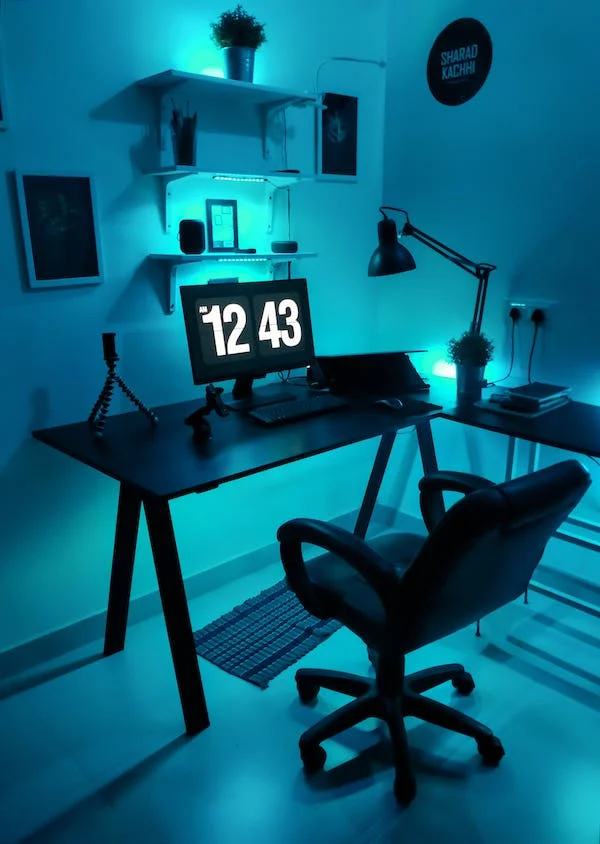The creative’s work life. Think of situations where you’ve had to make certain changes to your normal lifestyle, like creating and sticking to your budget or even deciding to meditate. These habits are just like setting boundaries; however, in this case, they deal with your nature as a creative. Now, the common term, “creative” refers to an individual who has the ability to generate original and innovative ideas, concepts, or works of art. Creatives often exhibit a high degree of imagination, originality, and expressiveness, allowing them to think outside the box and approach problem-solving in unique ways.
In today’s business marketplace, there is an increased need for creatives to deliver excellent jobs given the dynamic landscape. In most cases, they are often left working round the clock, with phrases like “I have a deadline” and a host of others, leaving no or limited time for other life engagements.

Western science makes it clear that delicate balances of temperature, chemicals, and electricity, are what make life possible. In a conference on balancing work, life, and creativity, Thomas Backer borrowed lessons from artists to emphasize that achieving well-being in life and in one’s life is very important. It is like balancing opposite worlds like “inspiration and discipline” and “freedom and control.”
Understanding the Role of Boundaries in a Creative’s Work Life
A study released by TBWA Worldwide at the Cannes Lions Festival of Creativity suggests that the needs of creative talent are no longer being met in the workplace, leading to widespread dissatisfaction and burnout. In what may sound like a regular topic, the above submission is very correct, as demonstrated over time. “Evidently, it’s changed a lot. When compared to the general workforce, creative talent is significantly more likely to be dissatisfied with their work-life balance and feel burned out. Boundaries, mental health, and a sense of stability are revealing themselves as being the most important, and most neglected needs among creatives.”

When this topic comes up, many tend to argue why the brunt of setting boundaries and work-life balance is solely placed on the organizations and not a 50-50 sharing formula between the creatives and their organizations. To provide an answer, maybe these companies should include work-life balance packages in their employees’ contracts. We have seen examples where companies take time off to go on retreats, where all members of the workforce do a little bit of work, and more fun activities and bonding.
To provide a clear definition, boundaries for a creative refer to the clear and intentional limits set between work and personal life. These boundaries define when, where, and how they engage in creative endeavors, as well as when they take time for rest, relaxation, and personal activities.
Tips for setting effective boundaries in a creative’s work life
1. Establishing clear working hours and leisure time
To demonstrate the importance of working time and work-life balance, the International Labour Organization released a publication to that effect in 2022. Better work-life balance according to the publication has several benefits including facilitating increased job satisfaction and a great feeling of job security. Setting clear working hours helps maintain a healthy work-life balance for increased productivity and well-being. Dedicate specific time blocks for work tasks, and ensure to schedule leisure time to relax, unwind, and pursue personal interests.
2. Communicating boundaries with clients, colleagues, and family
Openly communicate your boundaries with clients, colleagues, and family members. Clearly express your availability, response times, and when you’ll be offline. Encourage mutual respect and understanding to foster a supportive environment.
3. Creating a dedicated workspace and offline periods

One of the best trends in the current creative space is workspace dedication, tours, design, and others all over the internet. More creatives and employees in general are beginning to see the importance of getting a workspace. Designate a specific workspace to help separate work from personal life. When work hours end, leave the workspace to unwind and recharge. Establish offline periods, like evenings or weekends, to disconnect from work-related tasks and focus on personal time.
4. Utilizing technology to support boundary-setting
Digital technologies have created more ways than ever to make our lives easier. From the reminders on our phones, the task monitoring apps, and smartwatch health trends, they’ve contributed significantly. Leverage technology tools to support boundary-setting. Use communication apps to set automated responses during non-working hours. Utilize task management apps to organize work tasks efficiently and prioritize your time effectively.

In most situations, work pressure often comes from not delineating specific work hours and personal time. When this happens, creatives are left fighting with deadlines. In contrast, delineating specific work hours and personal time helps creatives focus better on their tasks during dedicated work hours. This undistracted focus can lead to increased productivity and more efficient use of creative energy.
Secondly, setting boundaries helps prevent overworking and burnout, as creatives allocate time for rest and self-care. This allows them to maintain a sustainable level of creativity and enthusiasm in the long run. By implementing these tips, you can establish clear boundaries that promote a balanced and fulfilling work-life experience while maximizing your productivity and overall well-being.
